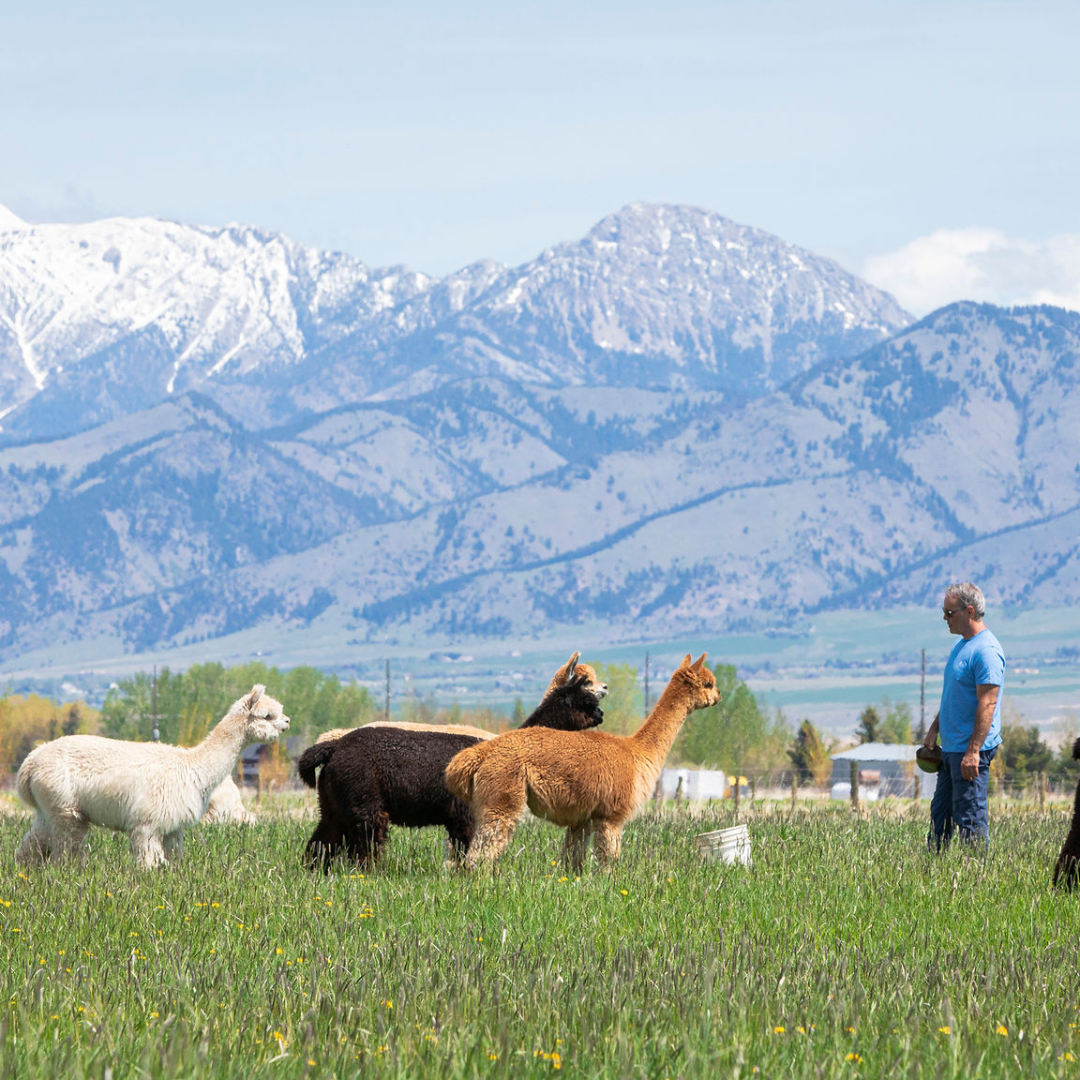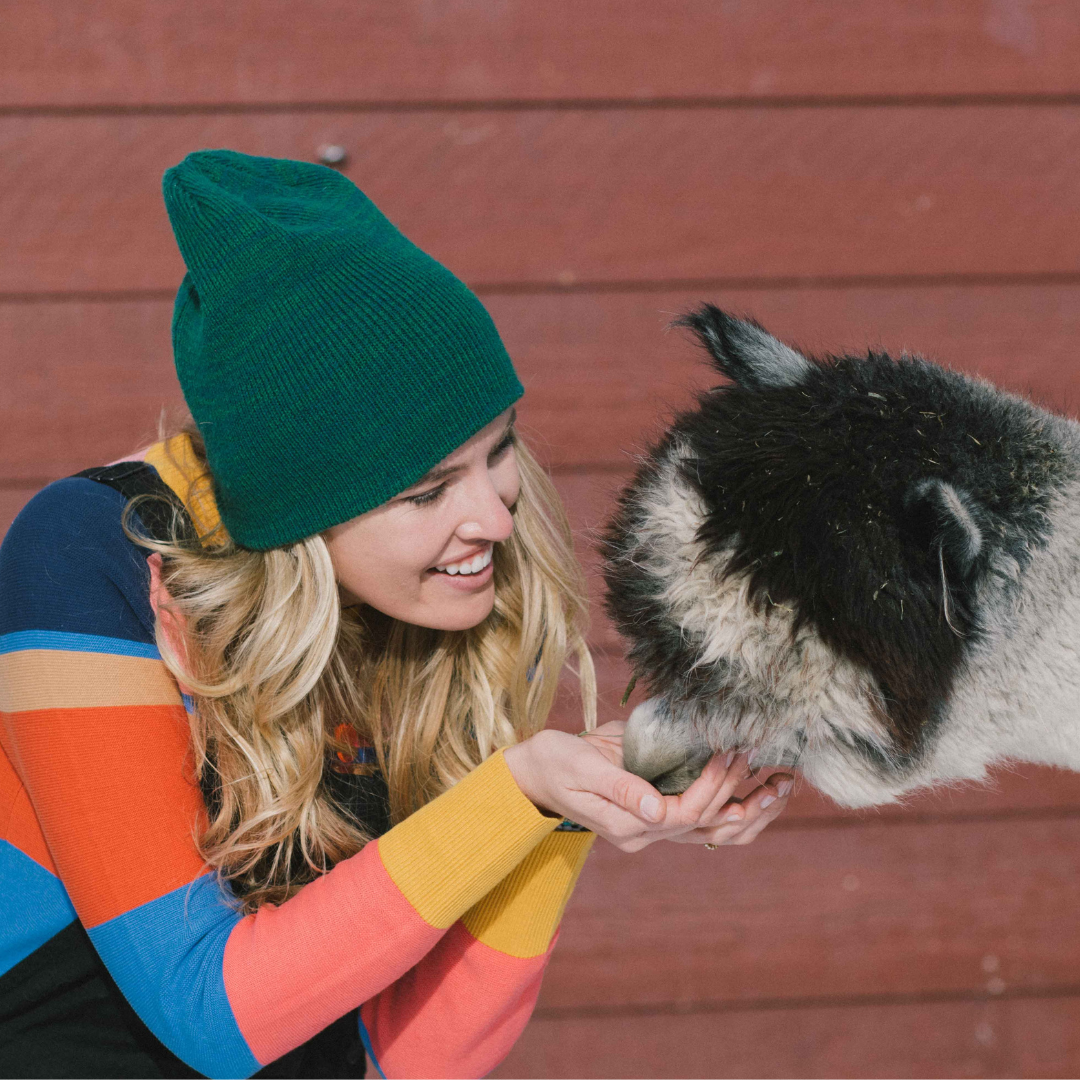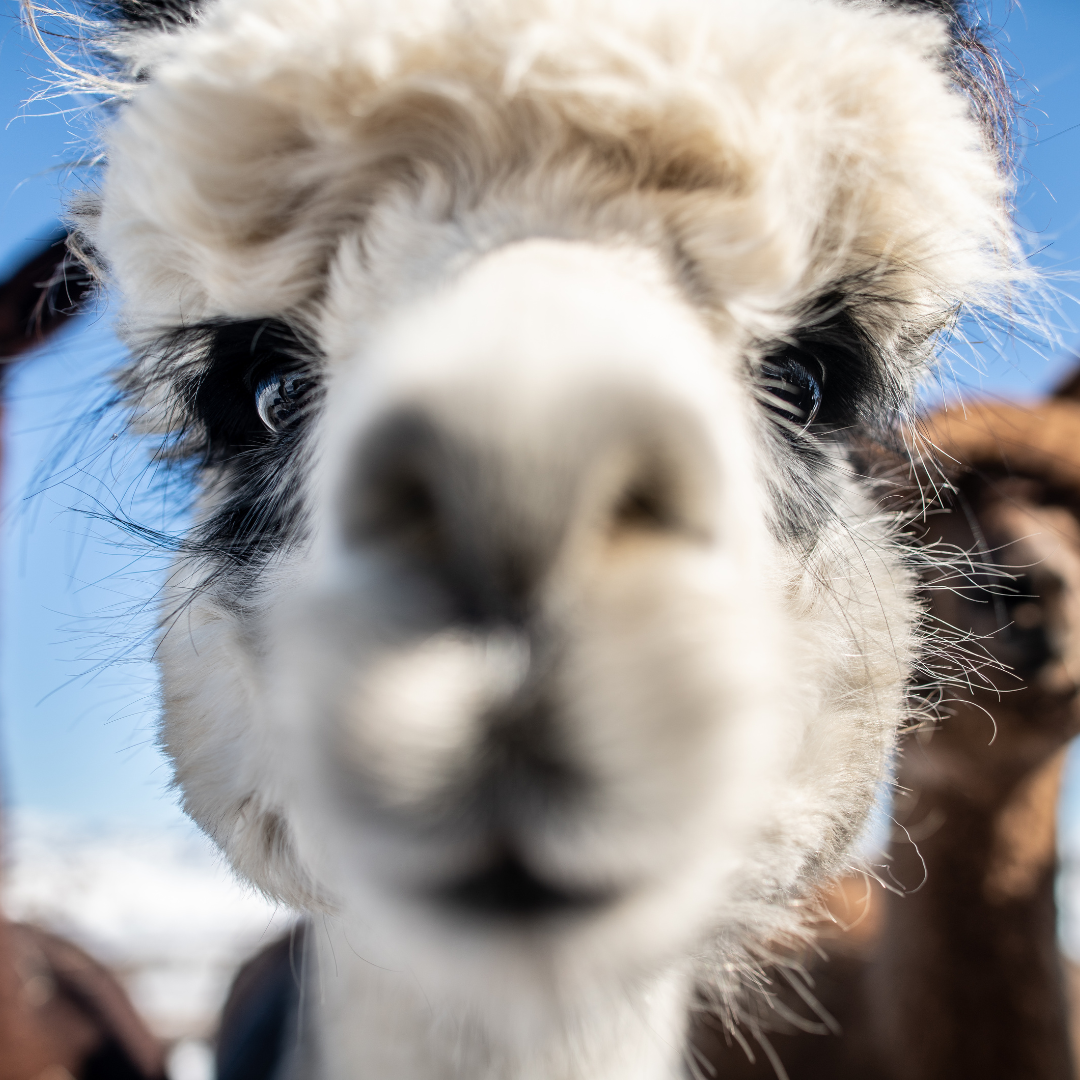I was sitting in a coffee shop in Bozeman, Montana in the middle of my work day when a notification from Sarah popped up on my phone screen. The message read “Wowesha is in labor, come now”. When Felix was born -- several weeks earlier -- by the time James and Sarah knew Pele was in labor he was already on his way out: the whole process took less than 15 minutes.

I collected all of my belongings, thanked the nice people working for my latte and journeyed across town to the farm as quickly as possible. As I pulled into the driveway (carefully dodging the large fence protecting the killdeer momma bird who decided to make her nest in the middle of the gravel driveway), I glanced in my rearview mirror to see Greg Cairns -- our videographer -- pull in behind me. Both of us worried that we already missed the birth of Wowesha’s baby, who was originally projected to be born within days of Felix’s birth. We hurriedly proceeded around the side of the house to the back pasture only to be stopped by Sarah who motioned from the house to come inside. To Greg’s and my surprise both James and Sarah were inside watching Wowesha from their living room. They told us to get comfortable because Wowesha wasn’t proceeding normally. If she was still in the same position after another 20 minutes, we would all go out there and offer some manual help. Oof. “Manual help” doesn’t really sit great with me when it comes to births and I could tell Greg was unsettled as well. We shared a glance and waited. And waited. And waited. No baby. No sign of a baby. After the 20 minutes were up, with a smidge of anxiety in his voice, James declared that we would all head outside and help deliver the baby alpaca. James rattled off a list of medical items for Sarah to grab and we made our way through the pasture over to Wowesha. James outlined the plan for all of us and our duties. Step one: halter the sure to be displeased Wowesha so that she could be moved to a nice grassy spot in an adjacent pasture. Catching an alpaca in labor is a lot like catching a hummingbird in your living room: challenging, sweaty and oftentimes someone gets poop where they don’t want it. When I watched my mom go for the hummingbird she had a blanket tied between two ski poles, unbrushed hair and Sheryl Crow playing, whereas when James, Sarah and I tried to catch Wowesha, Greg was filming, we were all running around with our arms extended trying to entice her into a corner and all of the other lady alpacas were running around as well. Can you spell chaos? As with all things alpacas, James and Sarah have a method to the madness. Luckily I’ve had nearly a year to practice catching alpacas, which doesn’t come close to matching James' and Sarah’s 17 years, but it helps. We gently grabbed Wowesha and got her haltered so we could walk her over to a comfortable spot. James externally felt her underbelly trying to figure out the baby alpaca’s orientation. He pushed gently on her side. “A foot. Maybe a knee here” he said, guiding us along as he gathered clues as to why the baby hadn’t come out yet. Knowing that the baby had to come out today or Wowesha was likely to experience severe complications and recognizing that something had to have been quite wrong since Wowesha is a seasoned mother, yet this birth was not coming easily, James grabbed an elbow high glove and performed a physical on the expecting mother. As he suspected, the baby’s nose was caught under Wowesha’s pelvis making it so the baby couldn’t safely exit the birth canal. With some help from James and a lot of comforting talks and pets from Sarah and I, James was able to help position the baby for a safe birth. Once things were lined up, James wanted to be hands off so the birth could be as natural as possible. So long as Wowesha kept having contractions and kept pushing, she would do it on her own. Wowesha’s water broke. Still no sign of the baby coming out. Time was passing and a growing fear that the baby wouldn’t have oxygen rose. With a little more manual help the baby started to appear. First two legs and then a nose. Wowesha continued to push and Sarah prepped a blanket for when the little baby came into the world. Wowesha laid down and we all met a small girl.


James started gently performing CPR hoping he could get the newborn to take her first breaths. She was areally small alpaca, weighing in only about ten pounds. All of us were standing in silence with our fingers crossed as James continued to administer CPR. Compression followed by compression. Then a communal deep breath as the baby girl took a breath of her own. She continued to breathe and so James and Sarah started to vigorously wipe her down, stimulating blood flow throughout her body. “We like to get them on the grass as early as we can”, James told us. He went on to tell Greg and I (the newbies to alpaca births) how important it is for them to keep the birthing process as natural as possible, while ensuring everyone is safe and healthy. We all stood around the baby alpaca and her mom as grandmas, aunts and cousins meandered in to check out the herd member.


After 25 minutes or so, the baby tried to stand up and after a few failed attempts was able to get up, walk around and start nursing from her mom. Greg named her Rosa and both she and her mom are happy and healthy. You can check out the videos for a visual experience of baby Rosa’s birth!



Join the alpaca revolution! Alpaca is a sustainable alternative that is not only good for the earth, but for all of us. Alpaca wool is stronger, softer, more eco-friendly, and offers 85% greater wicking capability than merino wool. It is also hypoallergenic! Learn more about the benefits of alpaca in our Alpaca vs. Wool blog posts, shop our collections and follow us on social media!





































































Leave a comment (all fields required)